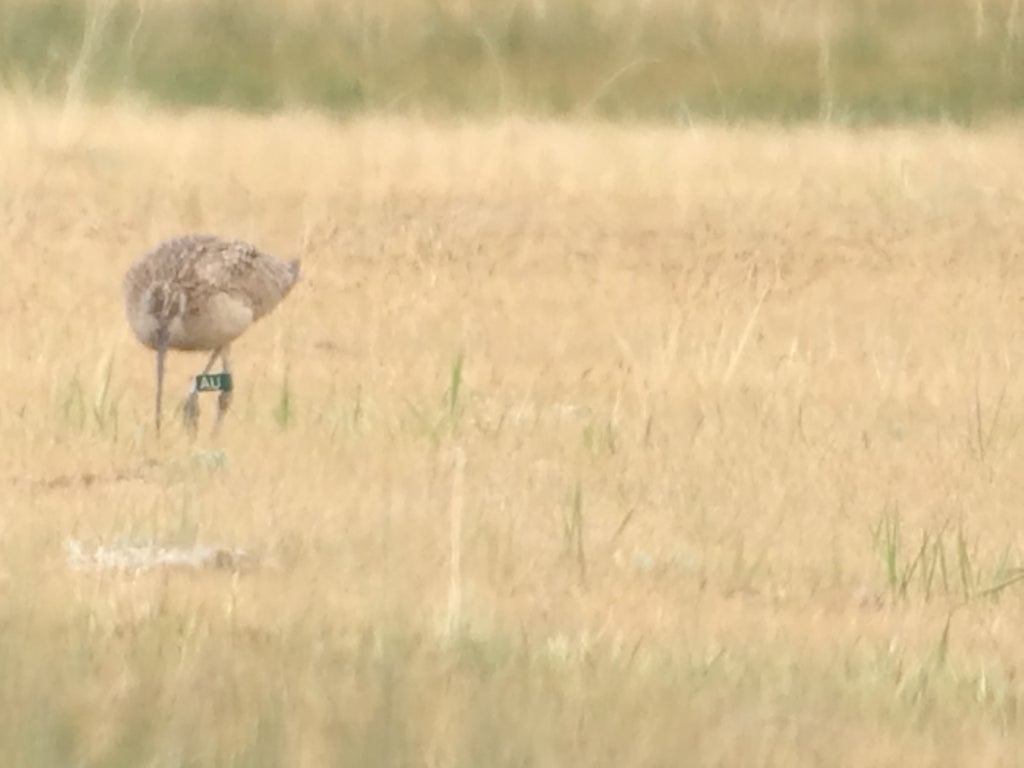by Jay Carlisle
Late last week I started to notice that something was amiss with Borah’s transmitter – in technical terms, the activity counter data was “stuck” which suggests the transmitter wasn’t moving. My heart sunk – in the 3 prior times this had happened, we found a dead curlew (one in which we strongly suspected foul play, 1 predator kill, and 1 unknown cause). Of course I care about all of these curlews but Borah had migrated to Mexico and back last winter and we’d just recently captured his mate (“Goldie”) so I feel a little extra for Borah and really didn’t want this to be the same result.
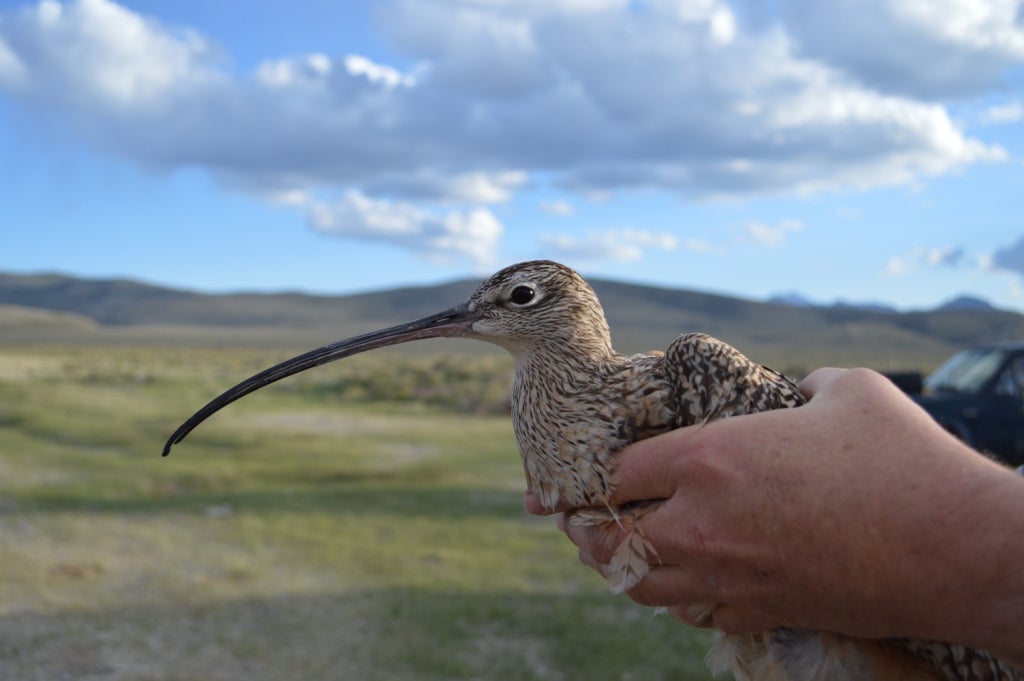
On Tuesday I made the 5+ hour drive from Boise to his breeding area on Big Creek Ranch, decidedly nervous about what I would find. I had texted with ranch co-owners, Molly & Tom Page, the night before and they were going to be there at the same time and generously offered to help me search – a relief for me b/c finding a small transmitter in a vast grassland can be tough even with the tracking gear! I thought I might have 4 helpers (Molly & Tom and their children, Lilia & Henry) but I ended up with 7 because Molly’s sister Ann Fuell was visiting with her 2 children, Kate & Ted, and they were excited for an outing. What a bonus!
Once we met up, they enthusiastically asked, “what do we do?” I suggested we walk straight towards their nesting territory because if Borah was alive and their nest was still active, he’d surely appear.
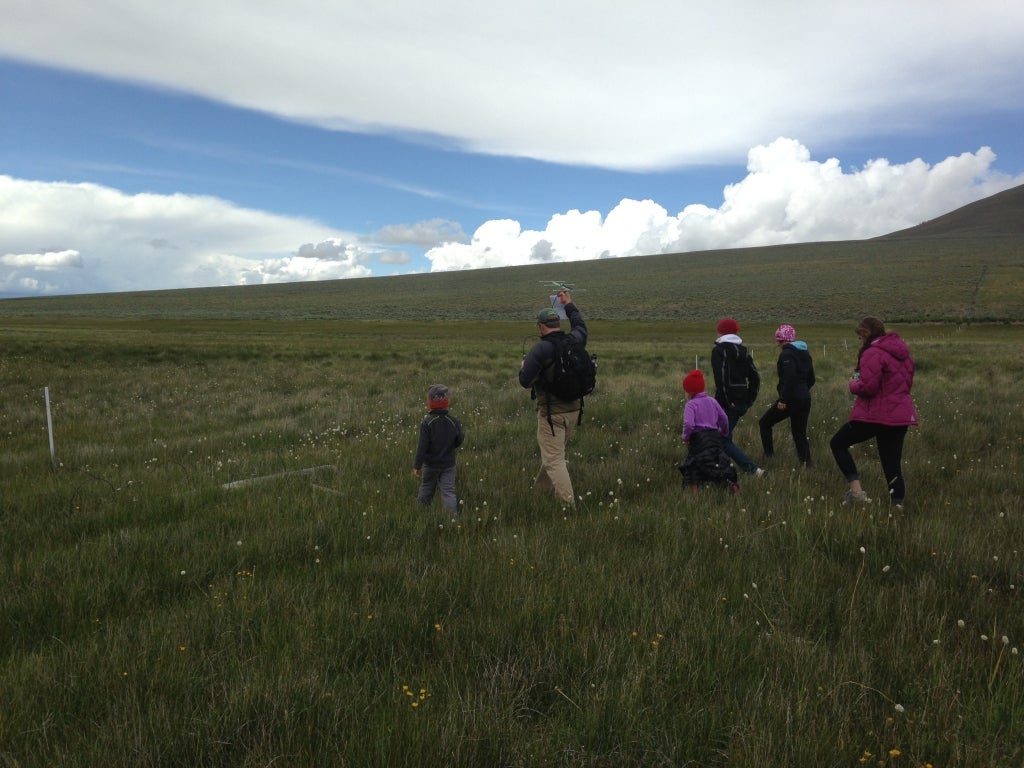
Photo by Molly Page
As we neared the nest, I could see a female (longer bill) standing in the vicinity of where the nest was and as I looked closer I could see, but not read, the plastic leg band (“alpha flag”) and suspected it was Goldie. Not long afterwards a screaming curlew appeared – as it flew towards us I could see it was a male by bill shape/length and then I saw the leg band and was hopeful. There was no antenna from a satellite transmitter which could suggest Borah was alive and had shed his transmitter – I just needed to read the alpha flag with certainty. On his next fly-by I could clearly read the letters “AU” and I breathed a huge sigh of relief – this was Borah and he must have dropped the transmitter. Likewise, once the female flew towards us I could see her antenna and read her 2-letter code.
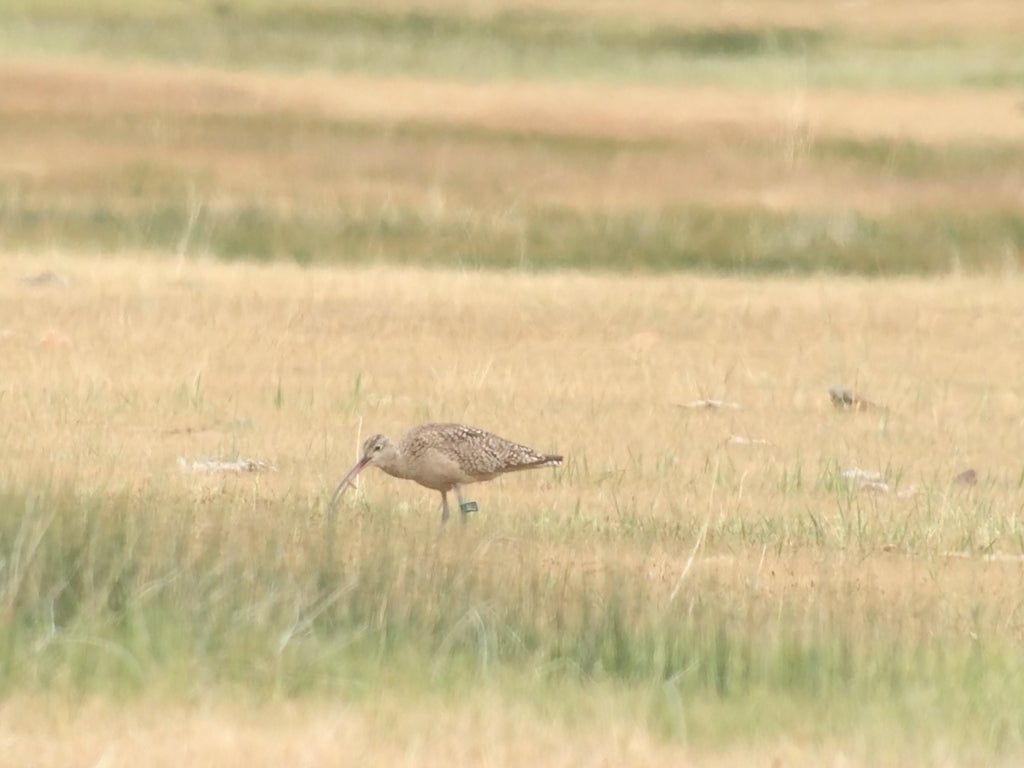
Photo by Jay
Adding to my excitement is that both Borah and Goldie were exhibiting the aggressive and defensive behavior that happens when they are protecting chicks! I was dive-bombed several times and I think Lilia & Henry were wondering if Goldie might actually hit one of us :-) Needless to say, I’m pretty sure these 2 curlews don’t share the same affection for me!
We then turned our attention to finding the transmitter. This consisted of waiting for once-a-minute messages from the receiver to deduce direction & distance. It took a while but we eventually got “warm” as we neared the headwaters of the creek (which flows into the Pahsimeroi River).
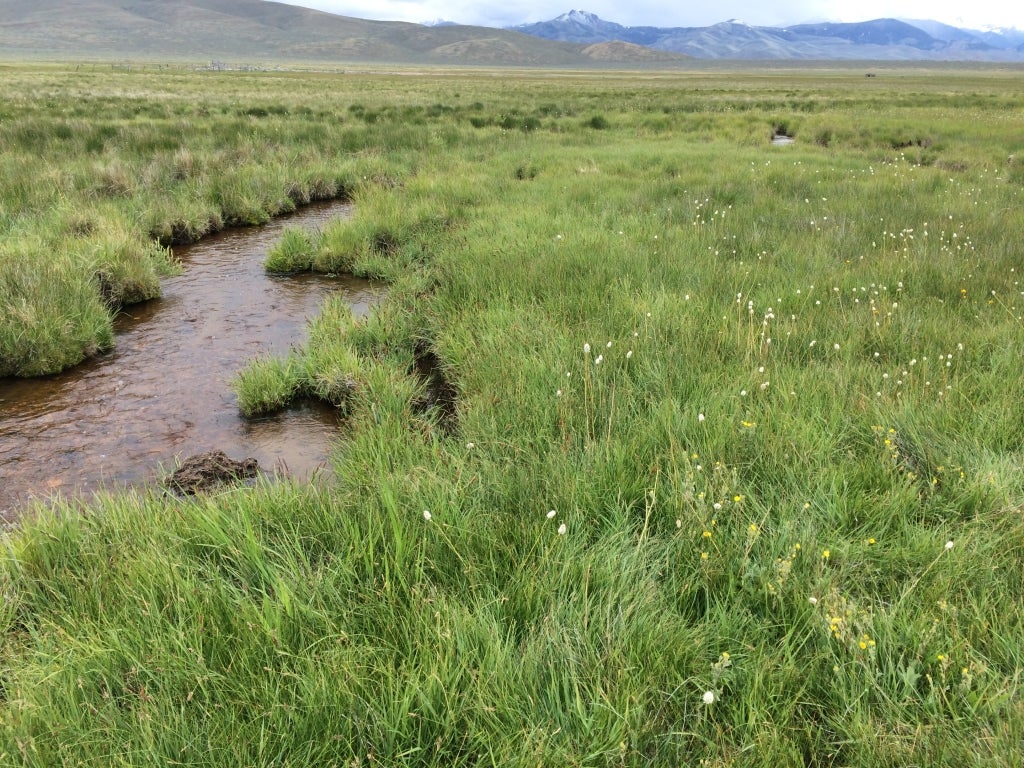
The family had previously agreed that extra s’mores would be the reward for whoever found the transmitter while I would just be happy to find it in one piece and try to figure out why it had fallen off. Before long, Kate said, “hey, what’s this?” and I was relieved once again – an intact transmitter on which the Teflon harness material had worn down so it fell off the bird.
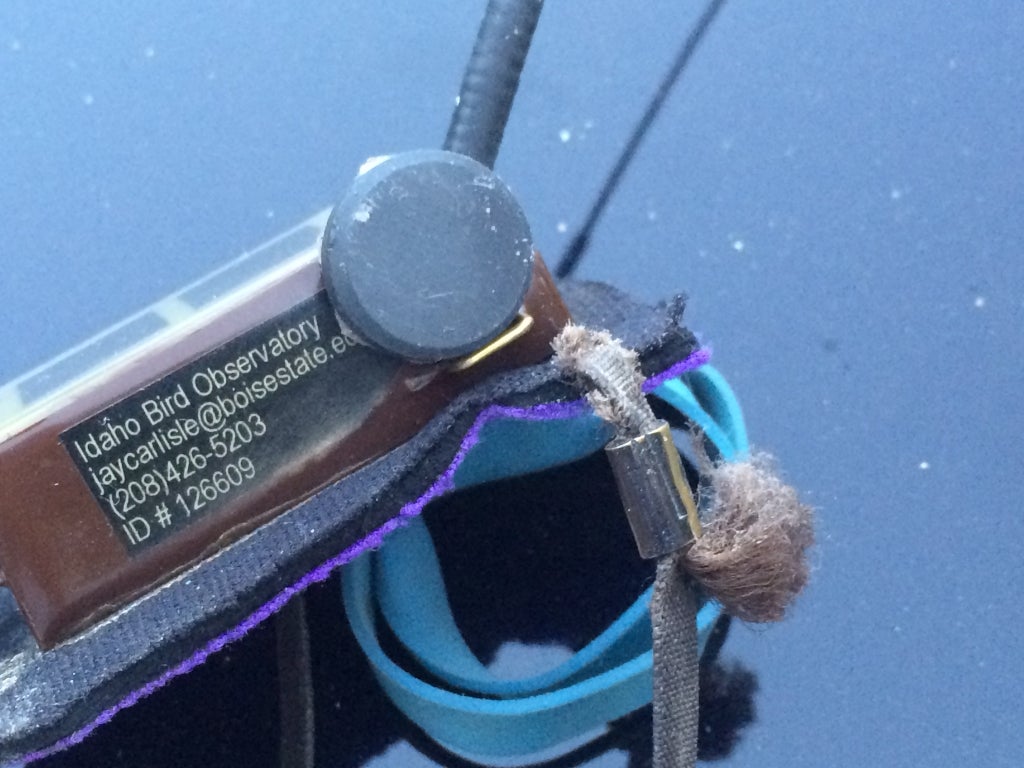
It was only a few feet from the creek so maybe Borah was bathing at the time? Lucky it hadn’t fallen in the stream because my understanding is that if the antenna is underwater, the unit won’t transmit and we wouldn’t have been able to find it at all!
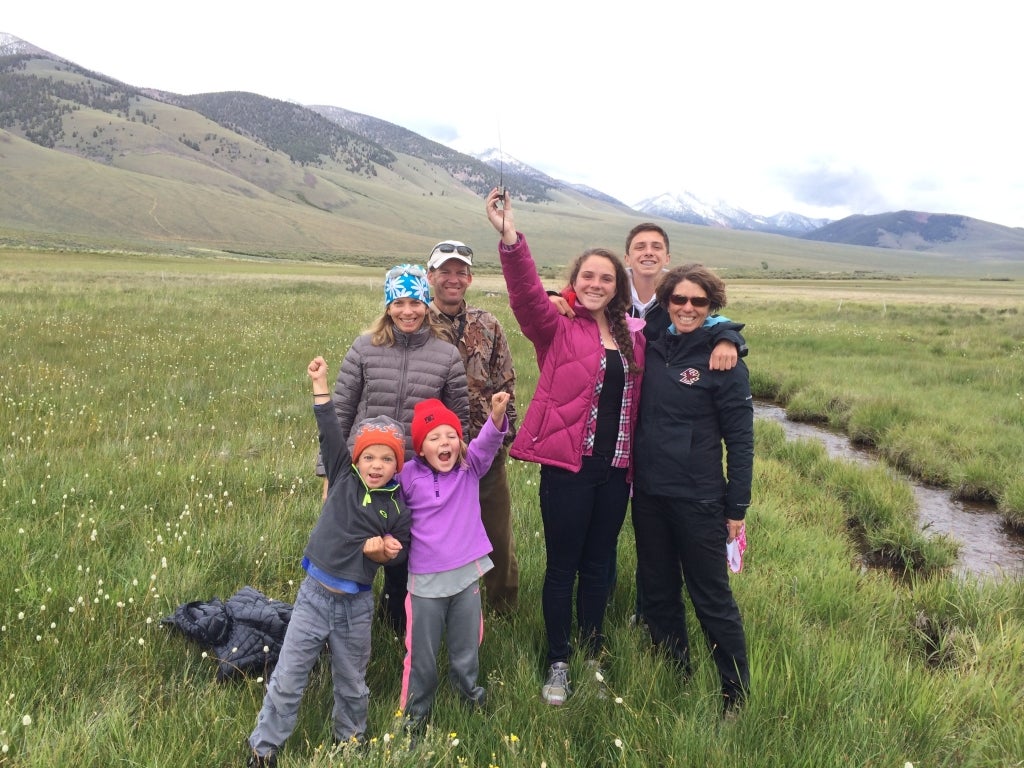
The bad news is that we won’t be able to track both Borah and Goldie in the same migration but I’m thankful that Borah survives and will cross my fingers that they raise the chicks to fledging and that Goldie goes somewhere exciting this winter! Thanks a ton to the Pages and Fuells for assisting with the search and for helping make my trip that much more worthwhile.
